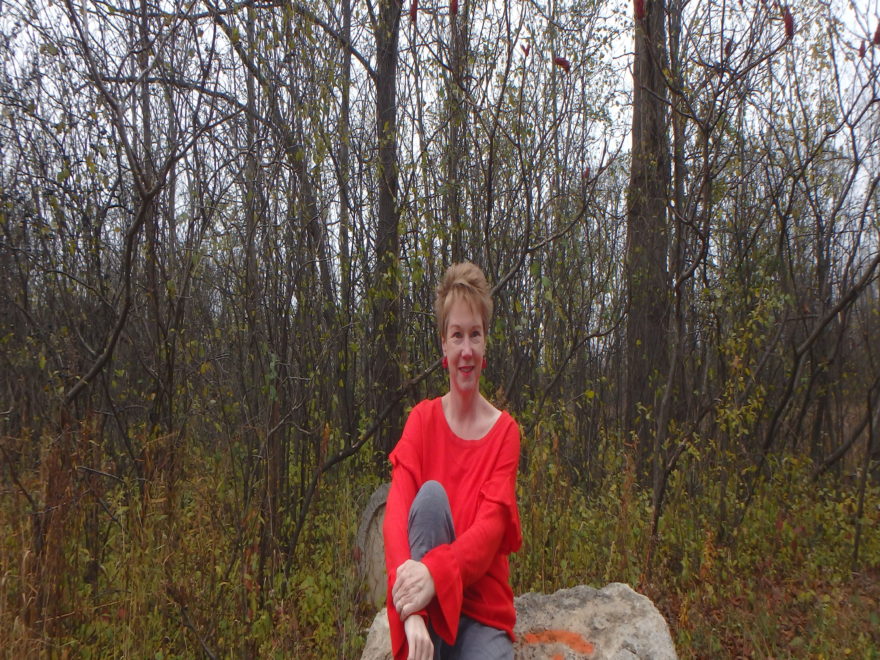The first Monday of November is “Color the World Orange Day” (1), falling this year on November 7. Today’s advocacy and awareness day is meant to raise the profile of an illness that has been around for hundreds of years, yet remains poorly understood. The disease awareness colour, as you may have guessed, is orange.
The same disease with which I was struck, out of the blue, back in 2016: Complex Regional Pain Syndrome (CRPS):
There is no cure for CRPS and no drug has been approved specifically for the disorder…
The prognosis for CRPS varies highly from person to person.
Early treatment, particularly rehabilitation, may help with limiting the disorder.
Younger people, children, and teenagers tend to have better outcomes.
Some older adults have good outcomes while others continue to experience severe pain despite treatment.” (2)
Did you notice that mention of “early treatment”, in the quotation you just read? That’s why my CRPS awareness and chronic pain advocacy activities focus primarily on healthcare professionals and students – because they have to be aware of this rare condition if they’re ever going to be able to diagnose it quickly.
And a rapid diagnosis is essential, to begin treatment quickly enough to benefit an individual patient. It’s not easy to even raise the topic of CRPS among healthcare professionals, though, for several reasons.
Not only is CRPS a rare condition, it also carries something of a ‘troubled past’ within the field of medicine. Even its name has changed a number of times! It has been called Algodystrophy, Causalgia, Reflex Sympathetic Dystrophy (RSD), Sudek’s Atrophy, and more!
There are only few diseases that have such a controversial history as the Complex Regional Pain Syndrome (CRPS).
Even its denomination underwent several changes to emphasize the prevalent pathogenic beliefs developed through the history of medicine.” (3)
The first treatment of CRPS has been attributed to French barber-surgeon Ambroise Paré, in the 1500s. Yes, you read that correctly. He lived from 1510 to 1590, so would have treated this condition somewhere around 400 years ago!
Yet despite all the ‘miracles’ of modern medical research, CRPS has remained a condition with no known etiology (how it develops, and why only certain individuals are affected) and no truly effective treatment options.
This is a concern because with no clear understanding of how this rare disease develops, no actions can be taken to try to prevent it. Nor can useful treatments be developed – without relying on pure chance, never a good practice in a research centre! – unless researchers have at least a basic outline of its etiology.
So here I am on CRPS awareness day, writing about this bizarre condition. Each patient with CRPS can have a different set of symptoms, from a long list of them.
My own specific symptoms include localized issues with my right hand and arm, and full-body problems like autoimmune fatigue and a ‘mild cognitive impairment’. Some of my hand and arm symptoms are an odd super-sensitivity of the skin called allodynia, alternating burning and freezing neuropathic (nerve) pain, bone pain, joint blockages (similar to adhesions) and stiffening, skin colour changeds, spasms, swelling, and tremors. And an extreme sensitivity to cold temperatures.
Other CRPS patients I know have numbness or tingling sensations, swelling so bad that it splits their skin, bone deformation at the joints, and a seemingly permanent colour change of the skin in the affected area(s).
One constant, though, among all the CRPS patients I’ve met – either in-person or online – is the severe pain caused by this condition. My usual description is this:
“Imagine that your arm has been soaked in a vat of gasoline for a few hours, and that this liquid has somehow seeped through your arm and hand – all the way into your bones.
And then someone holds a match to your fingertips, and sets the whole thing on fire.
And nothing can put it out.”
That’s what a ‘flare’ of CRPS feels like, to me. For many people with this disease, that’s how it ALWAYS feels.
References
(1) Color The World Orange™. An independent initiative. Webpage. Undated. Accessed __ Nov 2022:
https://www.colortheworldorange.com/aboutus
(2) National Institute of Neurological Disorders and Stroke (NINDS). Complex Regional Pain Syndrome. National Institutes of Health (NIH). Webpage. Update: 25 Jul 2022. Accessed __ Nov 2022:
https://www.ninds.nih.gov/health-information/disorders/complex-regional-pain-syndrome
(3) Iolascon G, de Sire A, Moretti A, Gimigliano F. Complex regional pain syndrome (CRPS) type I: historical perspective and critical issues. Clin Cases Miner Bone Metab. 2015 Jan-Apr; 12 (Suppl 1): 4–10. Published online 07 Apr 2016. doi: 10.11138/ccmbm/2015.12.3s.004
https://www.ncbi.nlm.nih.gov/pmc/articles/PMC4832406/#ref-list-1title

